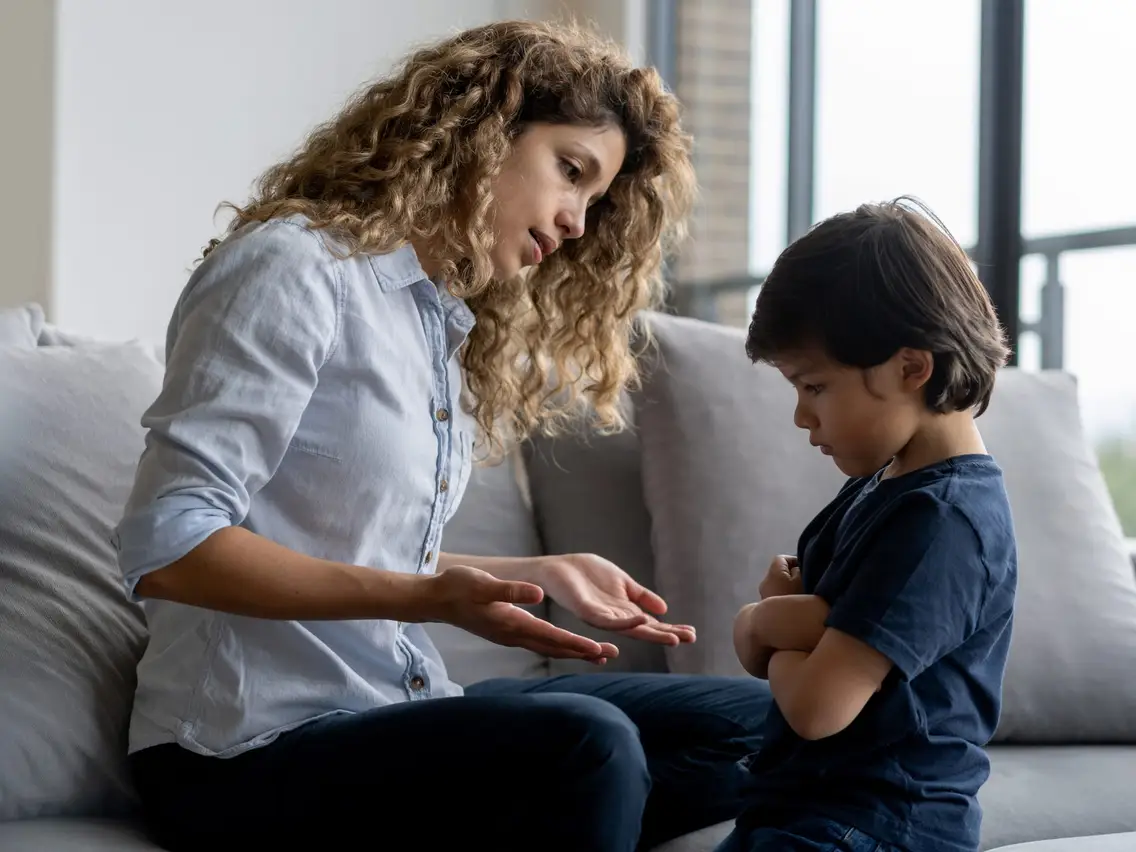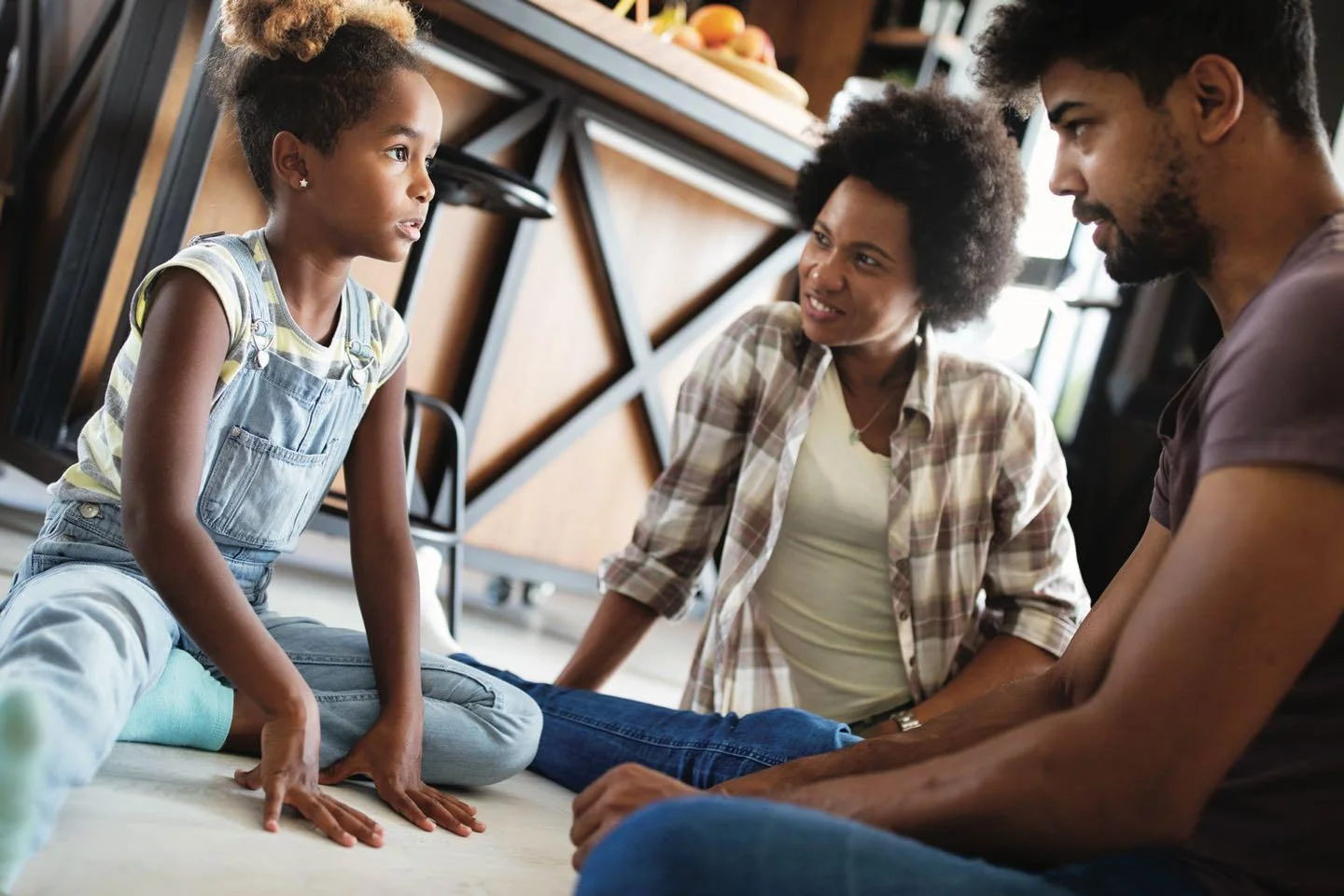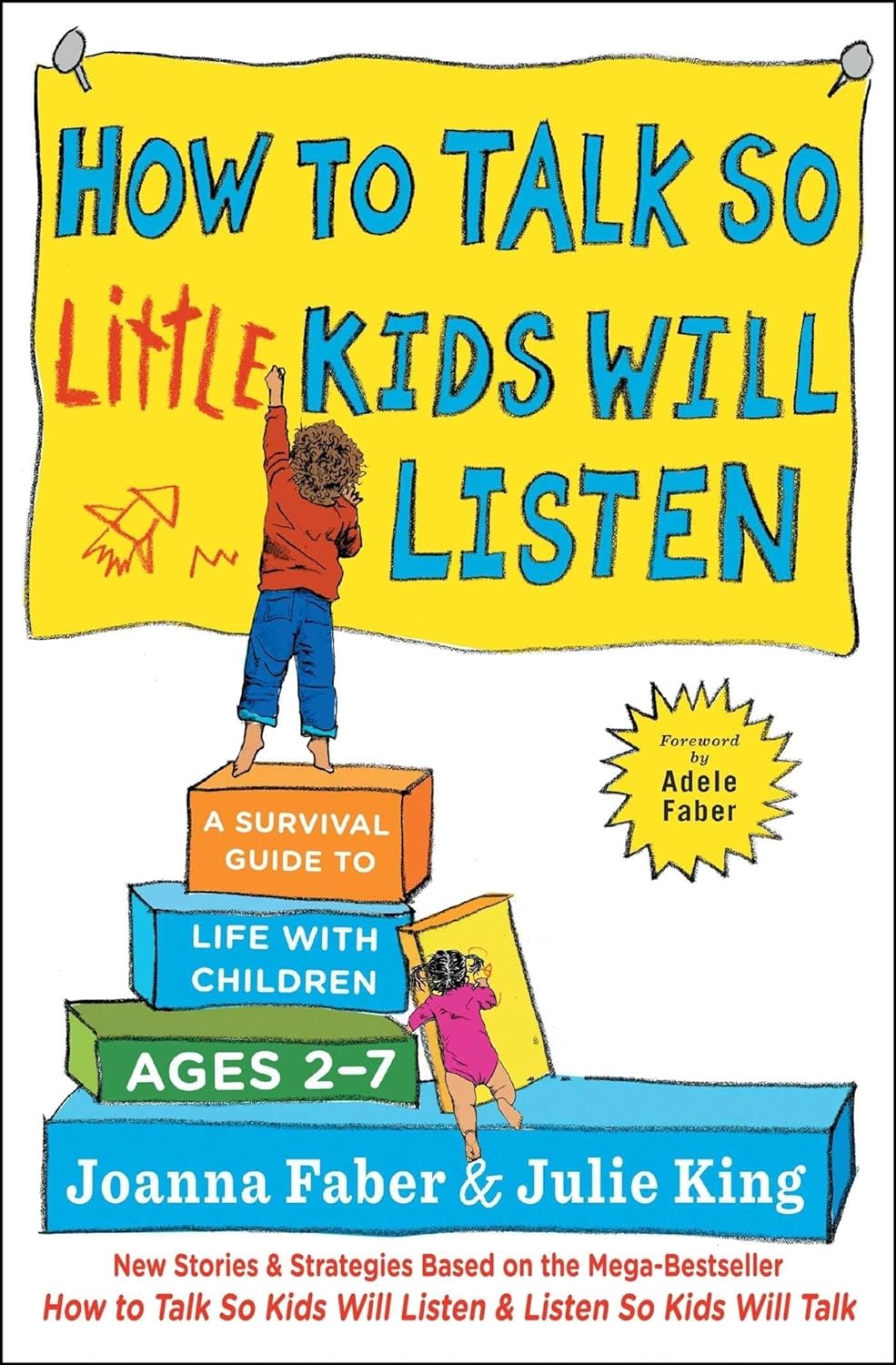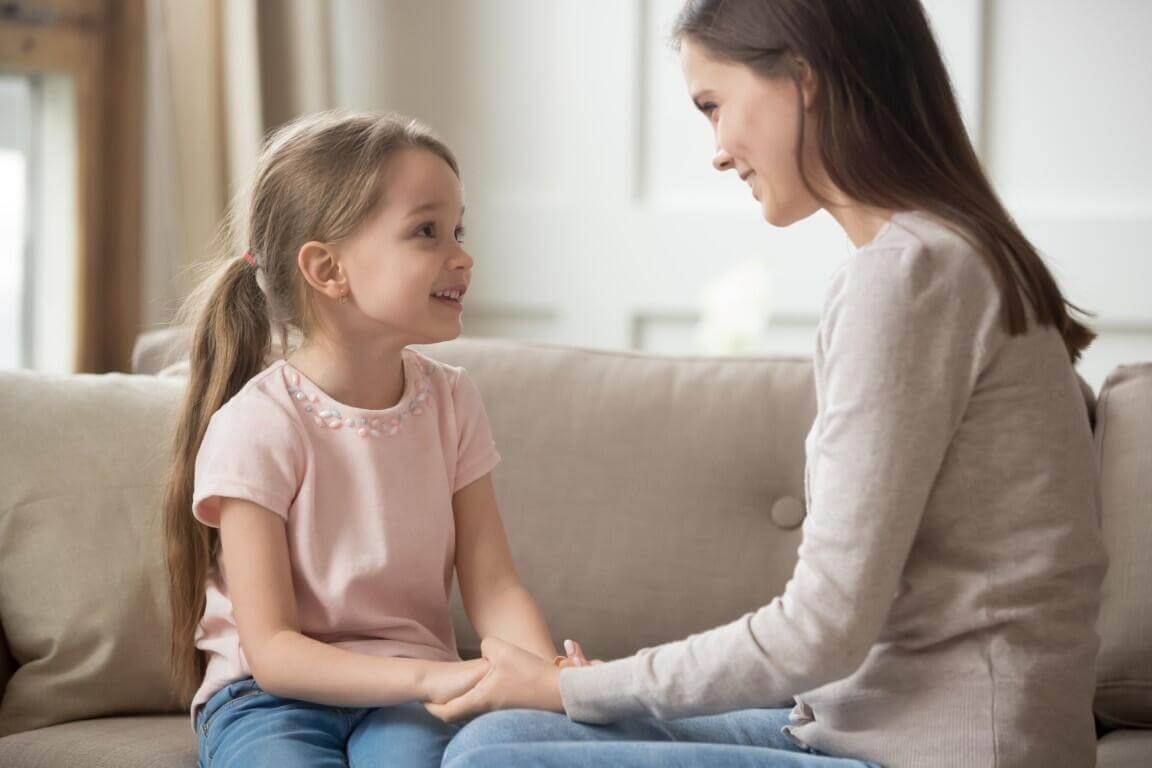Many parents find it challenging to communicate with their young children effectively. Kids can be easily distracted, have short attention spans, and struggle to express themselves clearly. As a result, parents may feel frustrated and overwhelmed when trying to get their children to listen and cooperate. However, there are practical strategies that parents can use to improve communication with their little ones.
One approach that has gained popularity in recent years is the “How to Talk So Little Kids Will Listen” method. This method is based on the best-selling book of the same name by Joanna Faber and Julie King. The book provides practical tips and examples for parents to communicate with their children in a way that is respectful, empathetic, and effective. By using this method, parents can learn how to connect with their children, understand their needs and feelings, and help them develop positive behaviors and habits.
The “How to Talk So Little Kids Will Listen” method emphasizes the importance of active listening, acknowledging children’s feelings, and using positive language. It encourages parents to avoid common communication pitfalls such as criticism, blame, and punishment. Instead, parents are encouraged to use strategies such as play, humor, and problem-solving to engage their children and build a strong relationship. With practice, parents can become more confident and effective communicators, and enjoy a more harmonious relationship with their little ones.
Reader's Roadmap
Understanding Your Child

Recognizing Emotions
One of the most important things a parent can do is to recognize and acknowledge their child’s emotions. Children often lack the verbal skills to express their feelings, so it’s important for parents to be attentive and observant. By acknowledging their child’s emotions, parents can help their child feel understood and validated.
One way to recognize emotions is to pay attention to nonverbal cues, such as facial expressions and body language. For example, if a child is frowning and crossing their arms, they may be feeling angry or frustrated. By acknowledging their child’s emotions, parents can help them feel heard and understood.
The Impact of Praise
Praise is a powerful tool for parents, but it’s important to use it in a way that is effective and meaningful. Empty praise, such as “good job” or “you’re so smart,” can actually have a negative impact on a child’s self-esteem. Instead, parents should focus on praising their child’s effort and progress, rather than their innate abilities.
For example, instead of saying “you’re so smart,” parents can say “I’m proud of how hard you worked on that project.” This type of praise focuses on the child’s effort and progress, rather than their intelligence.
Dealing with Lies
It’s not uncommon for children to tell lies, but it’s important for parents to address this behavior in a constructive way. Instead of punishing the child, parents should focus on understanding why the child felt the need to lie. This can help parents address the root cause of the behavior, rather than just the behavior itself.
For example, if a child lies about breaking a vase, the parent can say “I’m disappointed that you broke the vase, but I’m more concerned about why you felt the need to lie about it. Let’s talk about what’s going on.” This approach can help the child feel understood and can lead to more open and honest communication in the future.
Effective Communication Strategies

Encouraging Cooperation
When it comes to encouraging cooperation, it’s important to give children a sense of control and ownership over their actions. One effective strategy is to offer choices that are both acceptable to you and empowering to the child. For instance, instead of saying “Put on your shoes,” you could say “Do you want to put on your shoes or your sandals?” This way, the child feels like they have a say in the matter and are more likely to comply.
Another strategy is to use positive language. Instead of saying “Don’t run,” you could say “Please walk.” This way, the child is more likely to focus on the desired behavior rather than the negative one.
Addressing Hitting and Aggression
When a child displays hitting or aggressive behavior, it’s important to address it in a calm and clear manner. One strategy is to acknowledge the child’s feelings while also setting clear boundaries. For instance, you could say “I understand that you’re angry, but hitting is not okay. Let’s find a different way to express your feelings.”
It’s also important to model positive behavior yourself. If you react to the child’s aggression with your own anger or aggression, it only reinforces the behavior. Instead, model calm and respectful communication.
Supporting Shy and Introverted Children
For shy and introverted children, it’s important to create a safe and supportive environment. One strategy is to give the child time to warm up to new situations and people. Instead of forcing them to interact right away, give them the space to observe and acclimate at their own pace.
It’s also important to validate their feelings and let them know that it’s okay to be shy. You could say something like “I understand that meeting new people can be scary. It’s okay to take your time and feel nervous.” By acknowledging their feelings, you create a sense of trust and safety that can help them come out of their shell over time.
Special Considerations
When it comes to communicating with children, there are certain special considerations that parents and caregivers should keep in mind. This section will cover two important considerations: Approaches for Children with Autism and Adapting to Different Ages and Stages.
Approaches for Children with Autism
Children with autism may have difficulty with social communication and interaction, as well as restricted and repetitive behaviors. When communicating with a child with autism, it’s important to be patient and understanding. Here are some approaches that may be helpful:
- Use simple, concrete language: Avoid using abstract or figurative language, as children with autism may have difficulty understanding it. Use simple, concrete language and be as clear as possible.
- Use visual aids: Visual aids can be helpful for children with autism, as they often think in pictures. Use pictures, diagrams, or other visual aids to help convey your message.
- Give plenty of time for processing: Children with autism may need extra time to process information. Give them plenty of time to respond and don’t rush them.
Adapting to Different Ages and Stages
Children develop at different rates and have different needs depending on their age and stage of development. Here are some tips for adapting your communication style to different ages and stages:
- Toddlers (Ages 2-3): Toddlers are just starting to develop their language skills. Use simple, short sentences and speak slowly and clearly. Use gestures and facial expressions to help convey your message.
- Preschoolers (Ages 4-5): Preschoolers are developing more complex language skills. Use longer sentences and encourage them to express their thoughts and feelings. Use positive reinforcement to encourage good behavior.
- School-Age Children (Ages 6-7): School-age children are becoming more independent and developing their own interests. Use open-ended questions to encourage conversation and show interest in their activities.
By keeping these special considerations in mind, parents and caregivers can communicate more effectively with children of all ages and stages.
Creating a Supportive Environment

When it comes to communicating with little kids, creating a supportive environment is key. This means establishing healthy sleep patterns and managing screen time.
Establishing Healthy Sleep Patterns
Getting enough sleep is crucial for both children and parents. It helps with emotional regulation, memory consolidation, and overall physical health. Here are some tips for establishing healthy sleep patterns:
- Set a consistent bedtime and wake-up time
- Create a calming bedtime routine, such as reading a story or taking a bath
- Make sure the bedroom is dark, quiet, and at a comfortable temperature
- Avoid stimulating activities before bed, such as screen time or rough play
- Limit caffeine intake
By following these tips, parents can help their children establish healthy sleep patterns, which will make them more alert and better able to communicate during the day.
Managing Screen Time
Tablets and other electronic devices can be a great way to keep kids entertained, but too much screen time can have negative effects on their development. Here are some tips for managing screen time:
- Set limits on how much time kids can spend on electronic devices
- Encourage other forms of play, such as outdoor activities or board games
- Use parental controls to restrict access to inappropriate content
- Avoid using electronic devices as a reward or punishment
By following these tips, parents can help their children develop healthy habits when it comes to screen time, which will help them communicate better and develop important social skills.
Conflict Resolution

When it comes to talking with little kids about conflict resolution, there are a few key strategies that can help parents and caregivers navigate difficult situations.
Reducing Sibling Rivalry
One of the most common sources of conflict in families with young children is sibling rivalry. To reduce the likelihood of arguments and fighting between siblings, parents can try a few different approaches:
- Encourage positive interactions: Parents can help foster positive relationships between siblings by encouraging them to spend time together, play together, and work together on projects or activities.
- Set clear expectations: It’s important for parents to set clear expectations for behavior and consequences around fighting and arguing. This can help children understand what is expected of them and what will happen if they don’t follow these rules.
- Model positive conflict resolution: Parents can model positive conflict resolution strategies for their children by using “I” statements, active listening, and problem-solving skills in their own interactions with others.
Fostering Problem-Solving Skills
Another key strategy for helping little kids learn to resolve conflicts is to foster problem-solving skills. This can involve:
- Encouraging communication: Parents can encourage children to communicate their feelings and needs in a respectful way. This can help children learn to express themselves effectively and understand others’ perspectives.
- Teaching problem-solving skills: Parents can teach children problem-solving skills by helping them identify the problem, brainstorming possible solutions, and evaluating the pros and cons of each option.
- Reinforcing positive behavior: When children use positive conflict resolution strategies, it’s important for parents to reinforce this behavior with praise and positive reinforcement. This can help children learn that these skills are effective and valued.
By using these strategies, parents and caregivers can help little kids learn to communicate effectively, resolve conflicts, and build positive relationships with others.
Resources for Parents

Books and Reading Materials
Parents who want to learn more about effective communication with their children can turn to the book “How to Talk So Kids Will Listen & Listen So Kids Will Talk” by Adele Faber and Elaine Mazlish. This book has been a classic for over 30 years and has helped many parents improve their relationship with their children. Another great resource is “How to Talk So Little Kids Will Listen: A Survival Guide to Life with Children Ages 2-7” by Joanna Faber and Julie King. This book is a more recent addition to the series and focuses specifically on communicating with younger children.
In addition to these books, there are also many articles and blog posts available online that offer tips and advice on how to talk to kids. Parents can also find reading materials that focus on specific topics, such as how to handle tantrums, sibling rivalry, or screen time.
Workshops and Training
For parents who want to take a more hands-on approach to learning how to communicate with their children, there are workshops and training programs available. Adele Faber and Elaine Mazlish offer workshops based on their book “How to Talk So Kids Will Listen & Listen So Kids Will Talk”. These workshops are designed to help parents improve their communication skills and build better relationships with their children.
Joanna Faber and Julie King also offer workshops based on their book “How to Talk So Little Kids Will Listen”. These workshops are designed for parents of children ages 2-7 and provide practical advice and strategies for communicating effectively with young children.
In addition to these workshops, there are also many online courses and training programs available that focus on communication skills for parents. These programs can be a great way for busy parents to learn new skills and strategies on their own time.
Overall, there are many resources available for parents who want to improve their communication skills with their children. Whether it’s through reading materials or hands-on workshops, parents can find the support they need to build stronger, more positive relationships with their kids.
Conclusion
In conclusion, talking to little kids can be a challenging task, but it can be made easier by following a few simple guidelines. By using a calm and neutral tone of voice, parents can create a safe and nurturing environment for their children to express themselves.
One important aspect of talking to little kids is to avoid making exaggerated or false claims. This helps to build trust and credibility, which is important for the child’s overall development. Additionally, using simple and clear language can help children understand what is being said to them.
Another key factor is to actively listen to the child and acknowledge their feelings. This can help to build a strong relationship between the parent and child, and can also help the child develop emotional intelligence.
Overall, talking to little kids requires patience, understanding, and empathy. By following these guidelines, parents can create a survival guide for effective communication with their children, which can lead to better health and well-being for the whole family.







Leave a Reply
View Comments